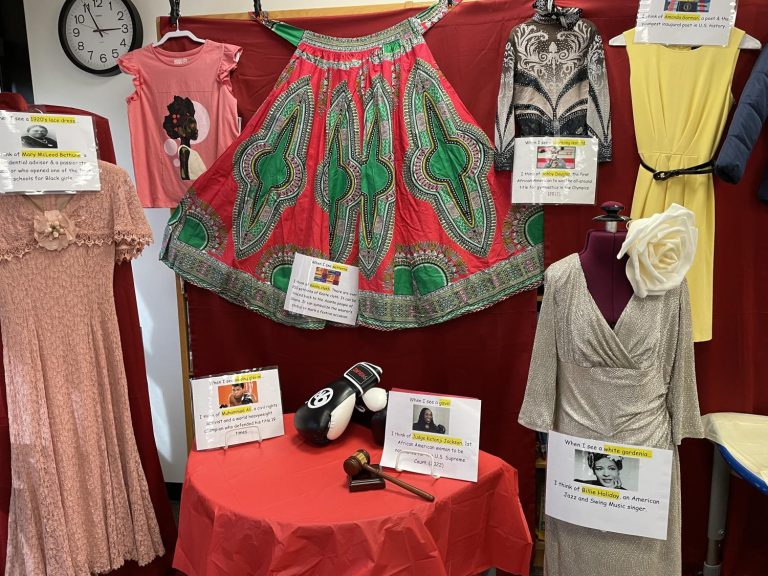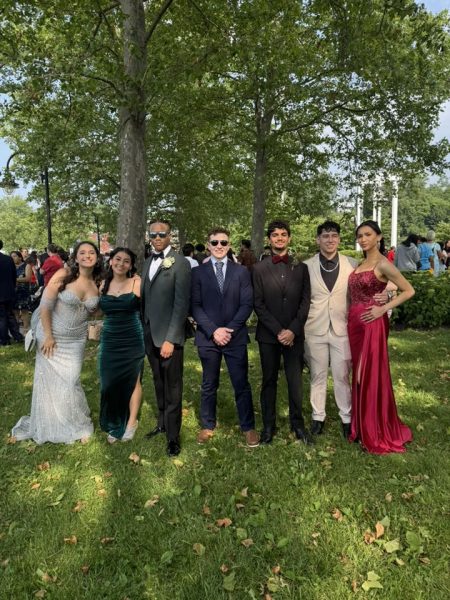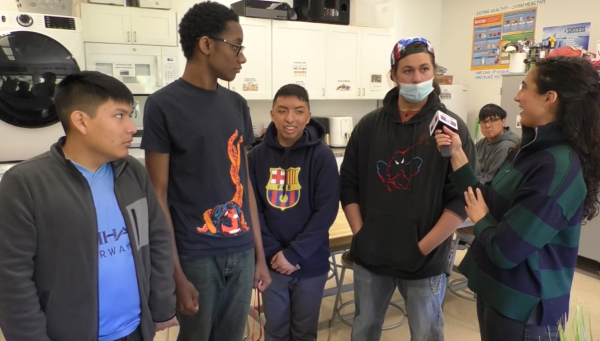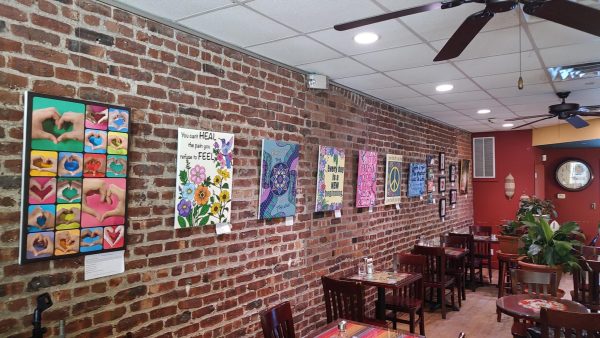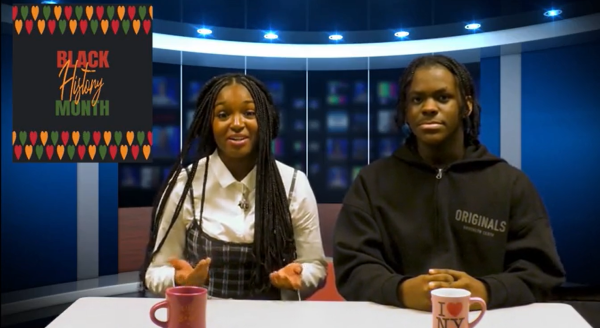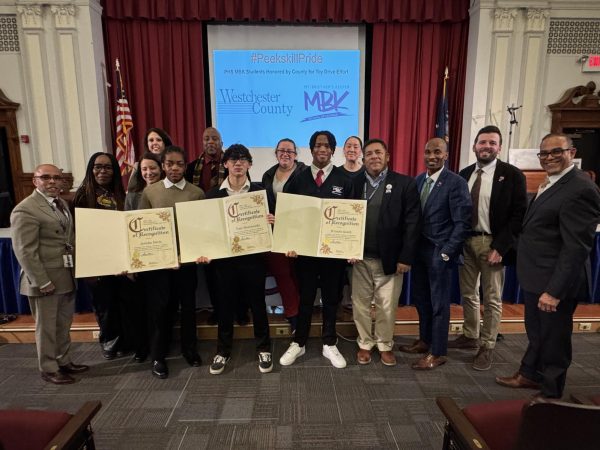‘Lights, Camera, Action’ part of Woodside’s African American Museum
Note: This article is also published in the Peekskill Herald here.
Black History Month is more than just a month to reminisce about past accomplishments. Every day, black people continue to fight injustices, influence pop culture, break records, and do things once deemed fit for only white people. Teachers all over the country use Black History Month as a way to engage students in thoughtful discussions on both past and present day leaders.
At Woodside Elementary School, Principal Susana Boyko and her team of teachers and staff found a creative and interactive way to teach kindergarten and first grade students the importance of Black History Month. They hope to show kids that anything is possible regardless of skin color. Woodside is home to 532 kindergarteners and first graders.
This is Susana Boyko’s first year as principal of Woodside Elementary School. Boyko has gone to great lengths to ensure that under her leadership, Woodside celebrates every race and ethnic group. “We created a cultural diversity and inclusion committee when I came on board in July. As part of the committee, one thing that we have focused on is making sure that we teach the kids to celebrate diversity,” said Boyko.
“We went really big for Hispanic Heritage Month! We borrowed the city’s stage for an outdoor performance and our staff volunteered. We brought Broadway to Woodside!” said Boyko. “My team said to me “If you went this big for Hispanic Heritage, you need to go big across the board” So we did just that. This is the second major project we’ve done this year.”

Throughout the month of February, teachers and staff at Woodside Elementary School came together in a collaborative effort to come up with a variety of activities to teach different aspects of Black History Month. From interviewing, coloring, dancing, building models, learning songs, and making projects, the kids were not short of options. This month-long project culminated in the Woodside library being turned into an interactive Black History Month museum curated by Therese Wood-Chang, the director of the cultural diversity and inclusion committee. “Ms. Wood-Chang, an English as a new language teacher, is the one who rallies the troops. If we have a vision, she brings it to life” praised Boyko.
The initial intention was to keep the museum up for a week or two for the kids to enjoy. After hearing about the museum, parents reached out and wanted to experience it for themselves. Due to popular demand, the Woodside team decided to extend the museum for a following week, till Friday March 11, slipping into Women’s History Month.
This museum was separated into collections or stations. All the collections at this museum were curated by different teachers and staff at Woodside. Each collection contained artifacts, facts, and images of famous people relevant to that collection. Kids were able to lend a hand in making and coloring the models used in the museum. “Each station was designed to showcase a beautiful part of black history month while also keeping it interesting and interactive for the kids here at Woodside.” said Wood-Chang. Due to COVID restrictions, teachers had to sign their classes up in order to go visit the museum and were given a certain amount of time to keep things running smoothly.
Highlights of the Museum
The museum starts off with the exploration collection which was curated by Ms. Anna Budds. Ms. Budds and her students made a replica plane, replica spaceship, and replica solar system for this collection. Teachers used these replica models to teach kids about Mae Jemison, the Tuskegee airmen, and Neil Degrasse Tyson and the importance they had in the exploration field.

Another collection in the museum was called Lift Every Voice and Sing and was curated by Wood-Chang and two of her colleagues. They taught their first grade students the black national anthem “Lift Every Voice and Sing” and used art to help their understanding of the song.“Each kid took a line from the song and were asked to illustrate their understanding by using watercolors and black crayon” said Wood-Chang. Their work was hung up on bulletin boards around the school. This collection also ties in with the “Diasporic Dreams” production that took place in February, where high school students also paid tribute to the Black National Anthem.
The education collection was curated by teaching assistant, Luz Cardona. This collection was separated into three different categories: exclusion, segregation, and inclusion. “Kids or adults were given index cards with an image and they had to differentiate and decide which category the card belonged in. ” said Wood-Chang. Every time a child placed a card in a bin, they were asked to explain their rationality. “If they needed help, there was a hint on the back that would help them but the goal was to try and get the kids to think.” said Boyko. Many parents who visited the exhibit learned just as much as the kids did, if not more. “We had several adults who came to this country and in visiting our museum they were shocked to learn about the education system in our past,” Boyko added.

A collection was made to showcase Photojournalist Gordon Parks. Gordon Parks was renowned for taking pictures of black Americans engaging in everyday things. Wood-Chang and her colleagues asked two first graders, Ava Reid and Jacen Hudson, to put themselves in Gordon Park’s shoes and photograph their everyday life. They were given a disposable camera and photographed all the things they enjoy doing and places they love going. After the assignment was done, both students expressed interest in becoming photographers in the future.
“They’re making this wonderful association as early as first grade of seeing what they can become and exploring their potential. We want to show them that they can become astronomers, astronauts, botanists, poets, and even photographers.” said Wood-Chang. She continued “They might be standing on the shoulders of giants and legends but we want to show them that they can be pioneers too. Better yet what we would like them to be is one of many. These kids are our future”.
The fashion collection was curated by Wood-Chang. Wood-Chang wanted to show kids that you can take something as simple as a piece of clothing and make a connection with influential black people in history. “We want the students to know the history so in the future when they see an item, they’re reminded of a legend, a giant, and their culture,” said Wood-Chang. Each item in this collection was connected to a powerful black person in history. The display consisted of a red power suit for Shirley Chisholm, a black robe for Thurgood Marshall, a gown for Michelle Obama, a leather jacket for Bassie Coleman, a director’s chair for Oscar Micheaux, a pair of boxing gloves for Muhammed Ali, a gavel for Judge Ketanji Brown Jackson, a sparkling leotard for Gabby Douglas, and many more.

The music collection was curated by reading specialist, Ms. Anna DelMonaco. This collection highlighted four music genres that were heavily influenced by African-Americans: Gospel, Jazz, R&B, and Hip Hop/Rap. Each genre had its own small gallery of pictures and artifacts along with a button. Once pressed, it would play a snippet of a song from that genre. This was a favorite for the kids at Woodside because they were able to hear types of music they have never heard before.
Another collection was Breaking News. On February 16, Woodside staff and teachers along with students were able to interview 17 African-Americans, seven of them work at Woodside as staff members and the other ten either in the district or in the community. The kids became student reporters for a day. The teachers and staff wrote the questions and tried to prepare the kids the day before. As some of the kids are at the beginning of their reading and speaking journeys, those who needed extra assistance during the interview were given earpieces. Cindy Ocasio and her student intern Marisa Lebitsch were whispering the questions into the earpieces. “The kids loved it. I get students in the hallway that see me and scream “action!” said Wood-Chang.
“Before COVID, we would take the kids on a behind the scene tour of NBC. We couldn’t do that this year so we wanted to bring NBC News to Woodside. We made Woodside Wildcat News!” said Boyko.
Lastly, there was a collection that showcased local community leaders. From school district assistant principals to the former mayor of Peekskill Andre Rainey and the current mayor Vivian McKenzie, there were pictures of local firefighters, police officers, and first responders. “We wanted to showcase the diversity in the role models right within our own community” said Boyko. A fact was also on display in this collection that there are 564 African Amercian students here in Peekskill and 32 African-American teachers.
This is the first year Woodside Elementary school created the Black History museum exhibit. Susana Buyko and her staff hope to make it a yearly event and plan on expanding the exhibit. “We’re not limited by imagination, we’re limited by space. If we had more space, the museum would’ve been bigger,” said Wood-Chang.

